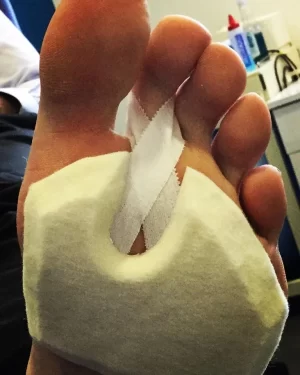
The plantar plate is a fibrocartilaginous structure located on the bottom of the foot, which serves to support and stabilize the metatarsophalangeal (MTPJ) joints. A plantar plate tear is a common injury that occurs when the ligamentous fibres of the plantar plate are partially or completely torn.
Plantar plate tears are typically caused by repetitive stress or trauma to the foot, such as from running, jumping, or other high-impact activities. They may also occur as a result of degenerative changes associated with aging or certain medical conditions, such as rheumatoid arthritis.
Symptoms of a plantar plate tear can include pain, swelling, and tenderness in the ball of the foot, particularly when weight-bearing or walking. There may also be a feeling of instability or a “popping” sensation in the affected joint.
Physiotherapy treatment for plantar plate tears may include rest, ice, and immobilisation to reduce pain and inflammation. Manual therapy techniques, such as massage and joint mobilisation, may also be used to improve range of motion and reduce stiffness in the affected area.
Strengthening and stretching exercises can help improve foot and ankle strength and flexibility, and may include exercises to target the plantar fascia and other supporting structures of the foot.
In some cases, custom orthotics or supportive footwear may also be recommended to help relieve pressure on the affected area and prevent further injury.
Surgical intervention may be necessary in cases of severe or chronic plantar plate tears, particularly if conservative treatment is not effective. It is important to consult with a healthcare professional if you suspect you have a plantar plate tear, as early diagnosis and treatment can help prevent further damage and improve overall outcomes.
